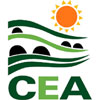Il villaggio neolitico
Menù> Da visitare
Jazzo Gattini (centro visite)
Visitare Parco Murgia Materana
Masseria Radogna (centro visite)
Il villaggio neolitico
San Falcione
San Biagio
Sant’Agnese
Madonna delle Tre Porte
Madonna delle Croci
San Nicola all’Appia
IL VILLAGGIO NEOLITICO
Nell’età della pietra (tra 7000 e 3700 anni fà) l’area materana fu interessata dai primi e numerosi insediamenti umani stabili, organizzati sotto forma di villaggi dotati di mura e trincee di difesa, capanne, fosse per derrate, forni e cisterne.
Sono i villaggi neolitici, dislocati sull’altipiano murgico, abitati da quelli che possiamo definire i primi agricoltori d’Italia, cioè popolazioni che praticavano l’agricoltura, l’allevamento, la levigatura delle asce in pietra e la fabbricazione della ceramica.
Costeggiando il muretto a secco che cinge il Parco Radogna lungo il lato occidentale, si raggiunge dopo circa 200 metri, l’interessante insediamento neolitico di Murgia Timone, il primo dei villaggi scoperti dall’archeologo materano Domenico Ridola.
Il villaggio è fortificato da un fossato a forma di 8 scavato nella roccia calcarenitica ed è quindi diviso in due settori: uno orientale piu’ piccolo e tondeggiante e uno occidentale piu’ grande e di forma ovale.
Il fossato appare oggi in gran parte ricoperto da detriti accumulati in migliaia di anni, ad eccezione dei settori studiati nelle diverse campagne di scavo archeologico che si sono succedute nel ‘900.
Scorgendo questi tratti scoperti del fossato è possibile rilevarne l’andamento a forma di 8.
Il perimetro complessivo è di 664 metri e racchiude un’area di oltre 20.000 metri quadri.
Nel settore orientale la superficie rocciosa liberata dallo strato di terreno mostra buche di pali di sostegno delle capanne, e buche di maggiori dimensioni utilizzate come deposito di sostanze alimentari, sepolture , e quella che il Ridola chiamò lunetta, un particolare accorgimento del fossato che permetteva l’ingresso nel settore orientale del villaggio.
All’interno del fossato furono ritrovati, numerosi reperti, soprattutto ceramica graffita, con motivi geometrici diversificati, e dipinta a bande strette rosse o brune.
Sono stati rinvenuti anche frammenti di vasi dipinti all’interno e graffiti all’esterno, altri recanti stilizzazioni di volti umani;
infine strumenti litici in selce e ossidiana, come lame, grattatoi e punteruoli, tre accette in pietra levigata – e spatole in osso.
Nella stessa area durante l’età del Bronzo, con il villaggio ormai in disuso, furono scavati tre ipogei funerari (tombe a grotticella).
In particolare nella tomba più grande nei pressi dell’ingresso occidentale del villaggio, due cerchi concentrici di pietre sono attraversati da un corridoio rettilineo che conduce all’ipogeo centrale. Sulla forma di questo enigmatico mausoleo sicuramente legata a solenni rituali preistorici, ancor oggi insigni archeologi e studiosi continuano ad interrogarsi.
Un altro insediamento neolitico cinto da fossato si trova nella vicina contrada di Murgecchia.
Anche quest’ultimo è costituito da due fossati difensivi, pressocchè concentrici, l’interno completo l’esterno incompiuto e mostra dentro l’area delimitata dal fossato interno le testimonianza delle antiche capanne neolitiche.
Questi villaggi si inseriscono nel più ampio fenomeno del popolamento del Materano che nel Neolitico raggiunge il momento di massimo sviluppo.
La Murgia offriva, infatti, condizioni assai vantaggiose per le popolazioni preistoriche: facili pascoli sull’altopiano, terreni fertili da destinare all’agricoltura nelle zone pianeggianti a ridosso dei corsi d’acqua, vaste zone boschive sulle basse colline.











